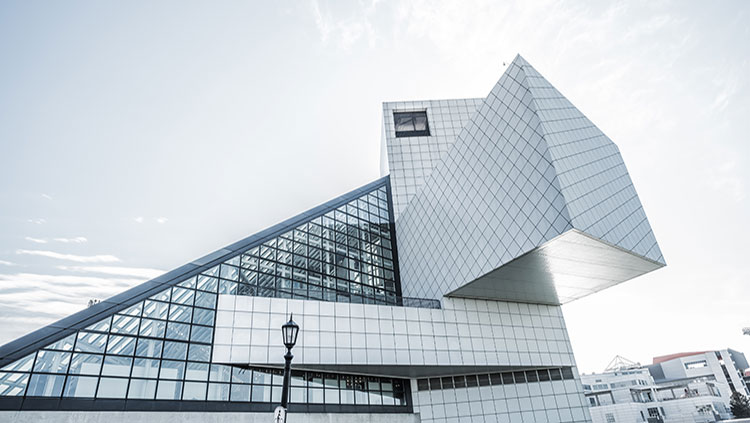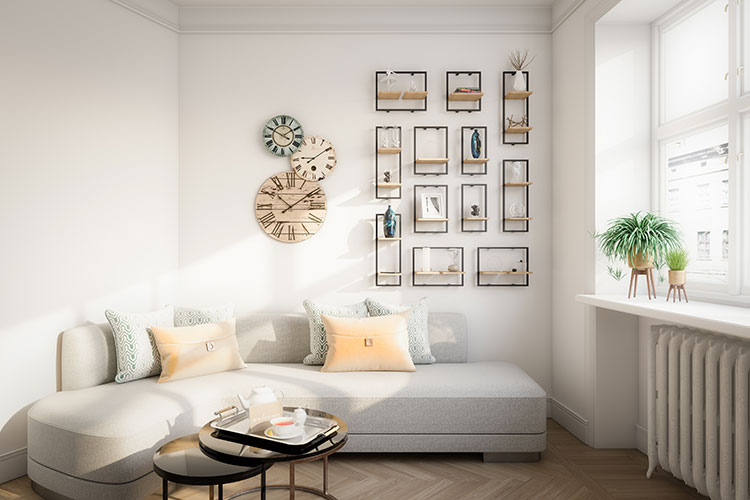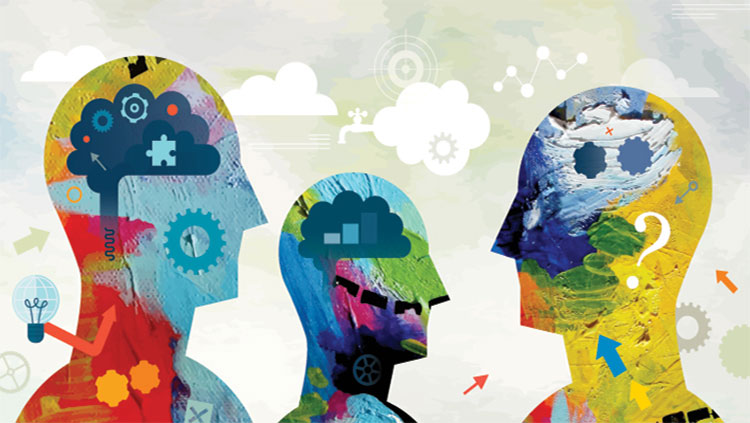How the Brain Sees Beauty in Buildings
- Published24 Feb 2021
- Author Susan Young
- Source BrainFacts/SfN

Ceiling height and window light concerns neuroscientist Anjan Chatterje as much as it does interior designers. Chatterjee is studying how room design evokes specific cognitive and emotional responses. Someday, his work could help guide building plans with the needs of the future occupants in mind.
His research is part of a growing field called neuroaesthetics, which explores how and why our brains respond to beauty. Some researchers have examined the neurobiological basis of music-induced pleasure. Other studies indicate abstract visual art activates the brain differently than realistic art. While it seems like a pie in the sky topic, neuroaesthetics is rich with potential practical applications and fundamental explorations of the brain, says Chatterjee, director of the Penn Center for Neuroaesthetics. Studying the brain’s responses to art, faces, or music, helps reveal how different parts of the brain work together during complex activities.
How can neuroaesthetics help us understand the brain and behavior?
Aesthetic experiences are pervasive in human experience. We encounter aesthetic choices as soon as we wake up, from what’s hanging on our bedroom walls to our grooming rituals to get ready for the day. In my lab, we’re trying to distill these complex aesthetic experiences into a few tractable components and evaluate how our brains respond to them.
You could approach aesthetics through any sensory system, but we focus on visual experiences of people, places, and things. We’re interested in the nature of the built environment and our sense of wellbeing. You may have a sense that the way you arrange your home or office affects your behavior in those spaces. For example, the bedroom is a place where you want to feel safe, so people typically choose colors, fabrics, and furniture that make them feel safe. We want to understand the specific ways the built environment can affect our wellbeing.

How do you study the neuroaesthetics of architecture?
We want to know if specific architectural features affect neural and mental processes. In one study based in Spain, we had participants lie in an fMRI machine while looking at 200 images of interiors. The interiors varied by ceiling height, openness, rounded or rectangular shapes, and other features. Participants typically found spaces with high ceilings, rounded shapes, and windows or other openings more beautiful. Finding these spaces beautiful activated the ventromedial prefrontal cortex, which is part of the brain’s reward system. This area also activates when you see a beautiful face, indicating that some of the same brain systems are involved in seeing a beautiful face and a beautiful space.
Recently, we did a large online study where participants in the U.S. looked at the same 200 interiors and rated them on 16 different psychological parameters like beauty, modernity, and comfort. The 16 parameters were distilled into three components that were robustly associated with feeling good about the spaces: coherence, how organized a room appears; fascination, how interesting the room is; and hominess, how comfortable one would feel in the space. Reanalyzing the earlier fMRI data from the Spanish study, we found those three parameters were associated with activity in distinct regions of the visual cortex. So, these seemingly subjective psychological parameters have a biological reality.
What are some practical applications?
We want to identify ways of designing buildings that support the people inside. We’re working with an architecture firm on designing a memory care unit. We know that people with cognitive problems or dementing illnesses often wander around. So, we’re including long walkways where people can wander safely and avoid barriers and locked doors they may encounter in other facilities.
Another issue we’re interested in is that people tend to have negative emotional responses to facial anomalies — scars, burns, cleft palates, or genetic-based structural differences. When people view photographs of atypical faces, there’s diminished activity in a brain region associated with empathy. We wanted to figure out if that’s because of unfamiliarity, so we collected data from 100 participants who looked at atypical faces every day through an app and answered questions about scenarios with the people in the photos. Some negative attitudes decreased over a week of being exposed to the atypical faces. So, greater exposure may be a step to address this issue.
What are some challenges of this work?
There is a fundamental limitation to studying architecture on a screen because you can’t reduce the entire experience down to two dimensions. I believe in the next five years, we’ll see mobile technologies including mobile EEG and infrared spectroscopy. These developments would let us collect neural data from people physically in a place instead of in a lab tethered to EEG leads or lying in an fMRI machine.
More broadly, there’s some pushback to the field of neuroaesthetics. Some neuroscientists think these approaches are too fuzzy and soft. For them, if you can’t stick a probe in a neuron then the results are somehow less trustworthy, not exactly neuroscience, which is something I've faced my entire career as a cognitive neurologist and a cognitive neuroscientist. I think this attitude is misguided. There are also some in the humanities who think neuroaesthetics is too reductionist to be of value.
But my feeling is that capturing how art, architecture, and aesthetics in general affect us and our brains is an important neuroscience and multi-disciplinary question. My lab has an artist-in-residence, a senior art historian, someone from the Barnes Foundation who comes to lab meetings, and an art educator among others. Some neuroscience data won’t replace how an artist or art historian looks at aesthetic experience and their contributions make the landscape of our investigations richer.
References
Cattaneo, Z. (2020). Neural correlates of visual aesthetic appreciation: Insights from non-invasive brain stimulation. Experimental Brain Research, 238(1), 1–16. doi: 10.1007/s00221-019-05685-x
Coburn, A., Vartanian, O., Kenett, Y. N., Nadal, M., Hartung, F., Hayn-Leichsenring, G., … Chatterjee, A. (2020). Psychological and neural responses to architectural interiors. Cortex, 126, 217–241. doi: 10.1016/j.cortex.2020.01.009
Hartung, F., Jamrozik, A., Rosen, M. E., Aguirre, G., Sarwer, D. B., & Chatterjee, A. (2019). Behavioural and Neural Responses to Facial Disfigurement. Scientific Reports, 9(1), 8021. doi: 10.1038/s41598-019-44408-8
Martínez-Molina, N., Mas-Herrero, E., Rodríguez-Fornells, A., Zatorre, R. J., & Marco-Pallarés, J. (2016). Neural correlates of specific musical anhedonia. Proceedings of the National Academy of Sciences, 113(46), E7337. doi: 10.1073/pnas.1611211113
Vartanian, O., Navarrete, G., Chatterjee, A., Fich, L. B., Leder, H., Modroño, C., … Skov, M. (2013). Impact of contour on aesthetic judgments and approach-avoidance decisions in architecture. Proceedings of the National Academy of Sciences, 110(Supplement 2), 10446. doi: 10.1073/pnas.1301227110
BrainFacts.org welcomes all your brain-related questions.
Every month, we choose one reader question and get an answer from a top neuroscientist. Always been curious about something?
Please submit your question by filling out this form.








